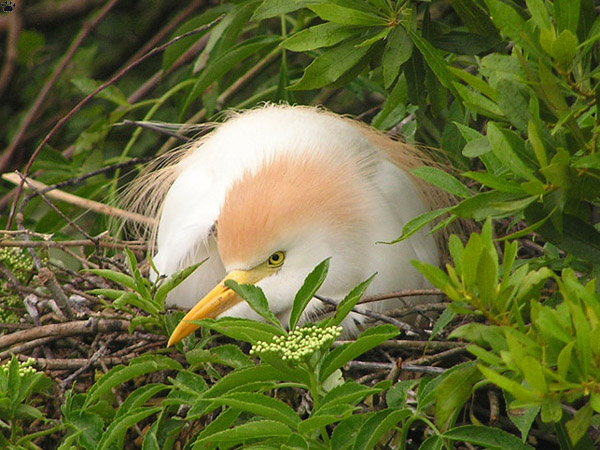
Cattle egret (Egretta ibis) on a nest, St. Augustine Alligator Farm Zoological Park. |
Florida, part 11: Herons and egrets (continued)
If, like most visitors to Florida, you limit your trip to amusement parks and city beaches, the one wading bird you are most likely to see is the cattle egret.
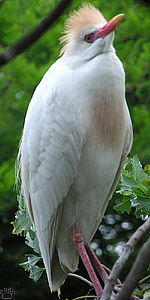
Cattle egret, Lake Kissimmee. |
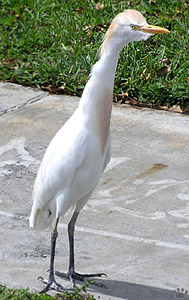
Cattle egret in a city, Coral Gables. |
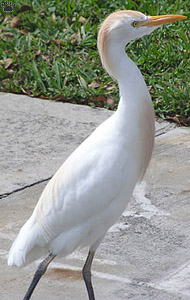
Cattle egret in a city, Coral Gables. |
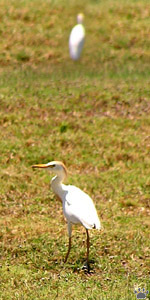
Cattle egrets in a field, Orlando. |

Cattle egret in full breeding plumage, SAAFZP. |
It is an Old World species which has colonized the Americas in the last 150 years, apparently after crossing the Atlantic by itself. It often nests with other wading birds, but prefers to feed in drier habitats. |
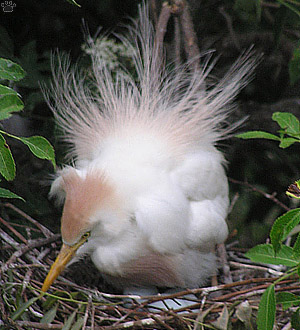
Cattle egret at a nest, SAAFZP. |
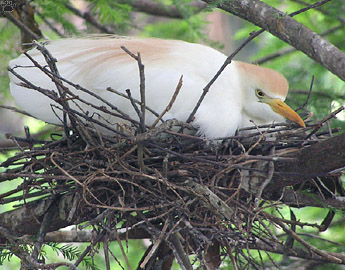 |
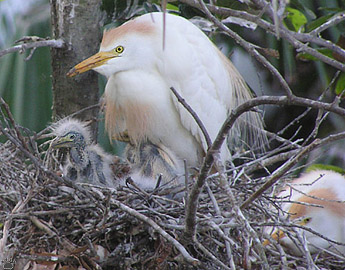 |
| Cattle egrets on nests, SAAFZP. |

Cattle egret with chicks, SAAFZP. |
Most often you see cattle egrets hunting for insects in fields, pastures, and on city lawns. They like to follow cattle and deer around, catching insects disturbed by the animals. In cities, their favorite prey is anole lizards. |

Cattle egret with chicks, SAAFZP. |

Great egret (Ardea alba), Guana River State Park. |
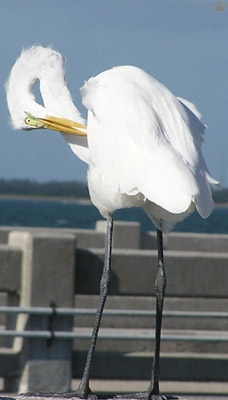
Great egret, St. Petersburg. |
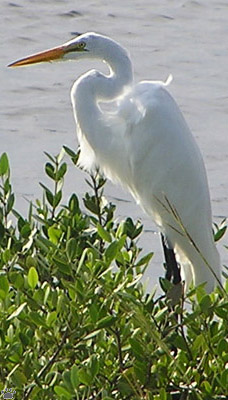
Great egret, Bahia Honda State Park. |
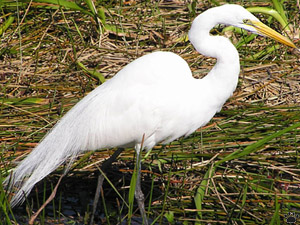
Great egret in breeding plumage, Pigeon Key. |
Great egret is a large bird, common in Florida. It prefers wetlands and protected seashores, but can also be seen in drier habitats. |
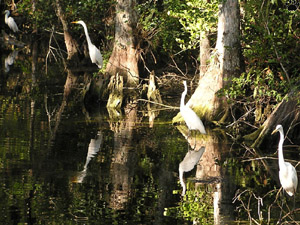
Great egrets hunting, Big Cypress National Preserve. |
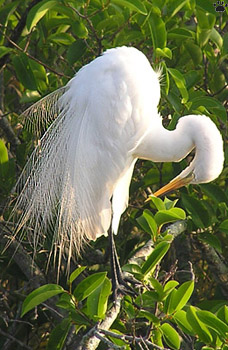 |
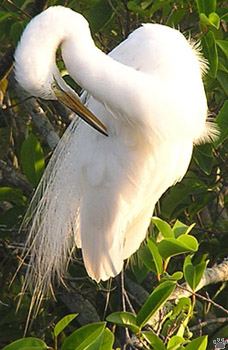 |
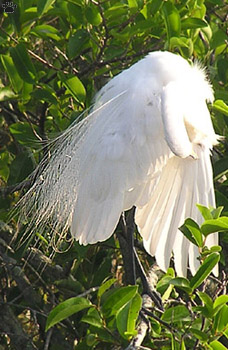 |
| Great egret, John Pennekamp Coral Reef State Park. |
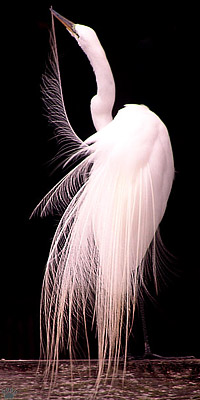
Great egret, Everglades National Park. |
Great egret hunts by slowly walking or standing motionless for hours. It would catch anything from insects to baby alligators and mice.
|
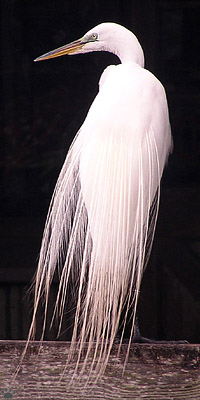
Great egret, ENP. |

Great egret, Jay B. Starkley Wilderness Park. |
| It nests in mixed colonies with other wading birds, but, unlike small egrets and herons, it prefers taller trees. |
 |
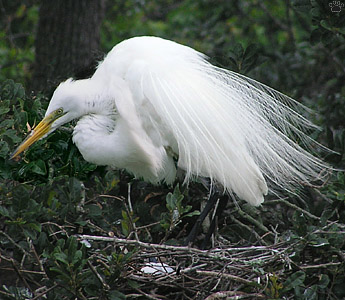 |
| Great egrets on nests, SAAFZP. |
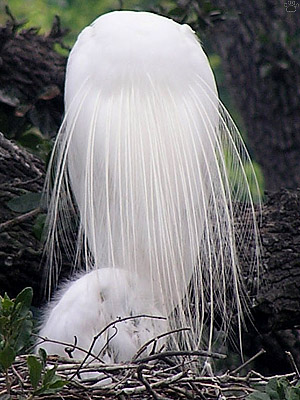
Great egret with chicks, SAAFZP. |
Because of its long, beautiful egrettes, great egret has suffered greatly from feather hunting. Some populations were completely wiped out. In Florida, there are now large colonies on both coasts, but the numbers are not what they used to be. |

Great egret with chicks, SAAFZP. |
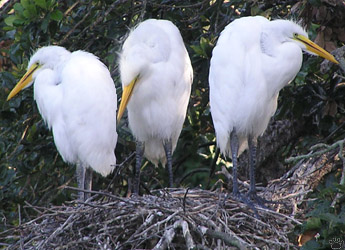 |
 |
| Great egret fledglings, SAAFZP. |
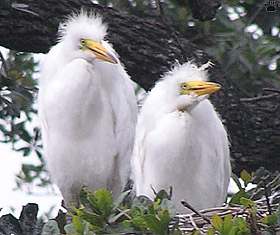
Great egret fledglings, SAAFZP. |
Great egret chicks are very active and often fall out of their nests. Usually each colony has at least one resident alligator, which feeds on unlucky eggs and chicks, fish dropped by parents, and occasional carrion. |
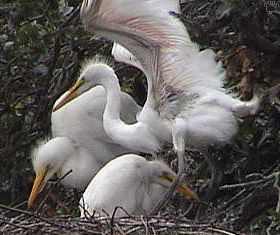
Great egret fledglings, SAAFZP. |

Great blue heron (Ardea herodias), ENP. |
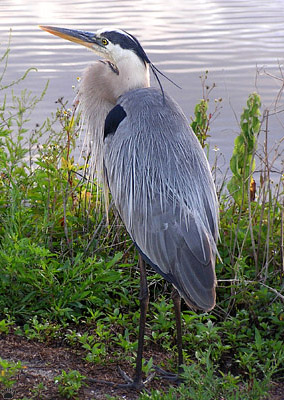
Great blue heron, Homosassa Springs State Wildlife Park. |
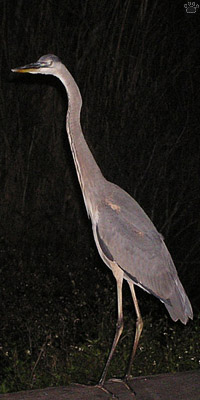
Great blue heron hunting at night, ENP. |

Great blue heron, Perry Oldenburg Mitigation Park. |
Great blue heron is even larger than the great egret. It prefers larger prey, and is a major predator of baby alligators in Florida. It hunts alone or in the company of a great egret, often at night or at dusk. |
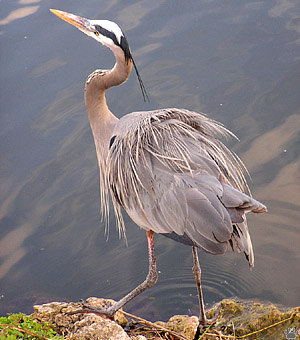
Great blue heron in breeding plumage, ENP. |
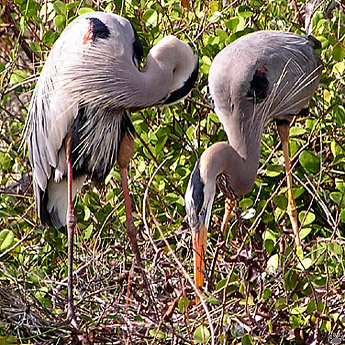
Great blue herons at a nest, Arthur R. Marshall Loxahatchee Nat'l Wildlife Refuge. |
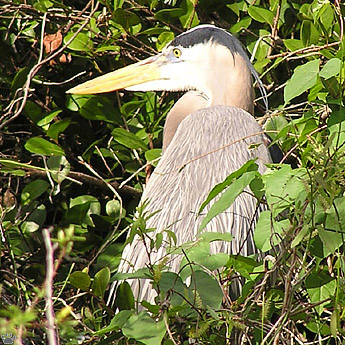
Great blue heron at a nest, Arbuckle Wildlife Management Area. |
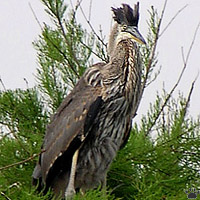
Great blue heron fledgling, ARMLNWR. |
Although great blue herons would sometimes nest in mixed colonies, in Florida most of them nest in small single-species colonies or alone. Only in the north of the state do some colonies reach 100-200 pairs. Great blue herons hunt at the water edge, often preferring deep canals and lakes. Their long legs allow them to fish at greater depths than other herons and egrets. If you flush one at night, its sharp, harsh croak can easily give you a heart attack. |
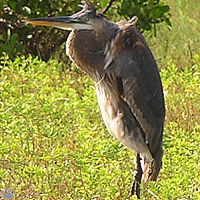
Immature great blue heron, ENP. |
 |
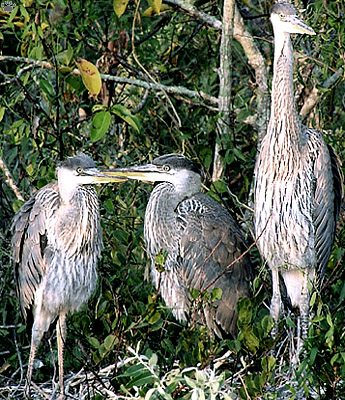 |
| Great blue heron fledglings, ARMLNWR. |
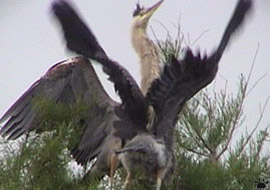
Great blue heron feeding a fledgling, ARMLNWR. |
As all egrets and herons, great blue herons are mostly monogamous. During the courtship, they perform spectacular dances. They can be very noisy at nests, especially when the chicks are half-grown. |
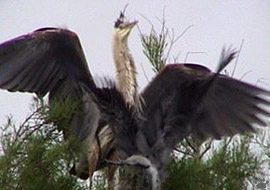
Great blue heron feeding a fledgling, ARMLNWR. |
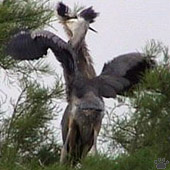 |
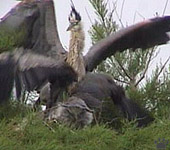 |
 |
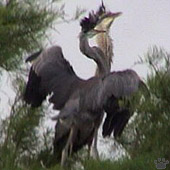 |
| Great blue heron feeding a fledgling, ARMLNWR. |
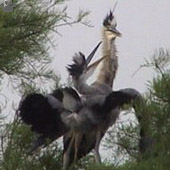 |
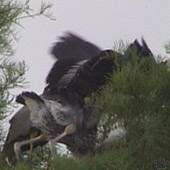 |
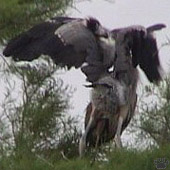 |
 |
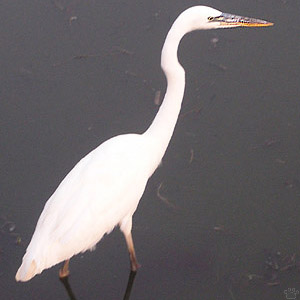
Great white heron, ENP. |
Great blue heron has a white morph, called great white heron. It is common in the mangroves of Florida Bay and the Keys; a pair is often fishing at the end of Anhinga Trail in the Everglades. |
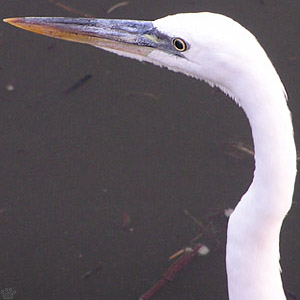
Great white heron, ENP. |

Great white heron fishing, Shell Key. |
Part 12. Wading birds (continued)
Back to Part 10
Home
|